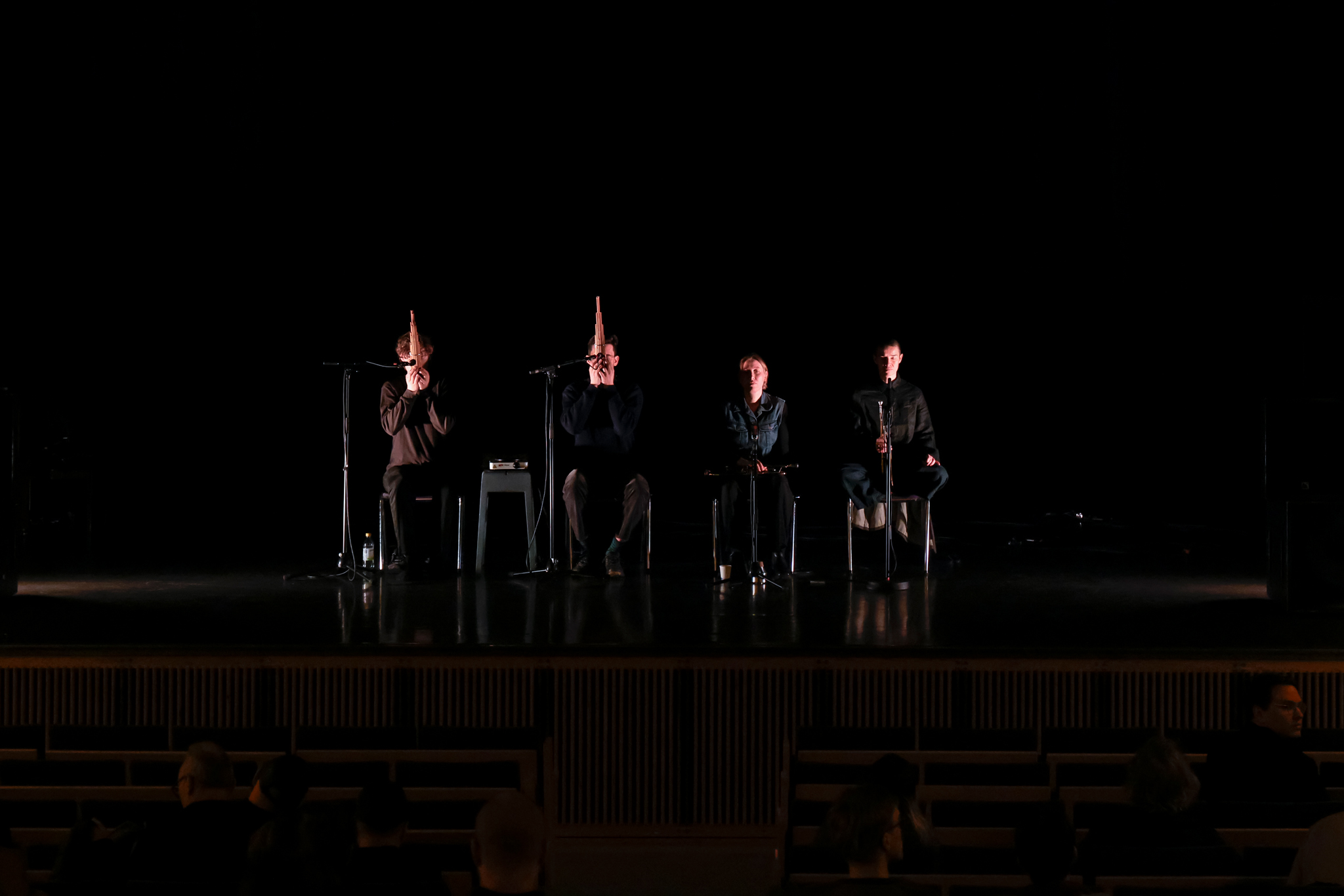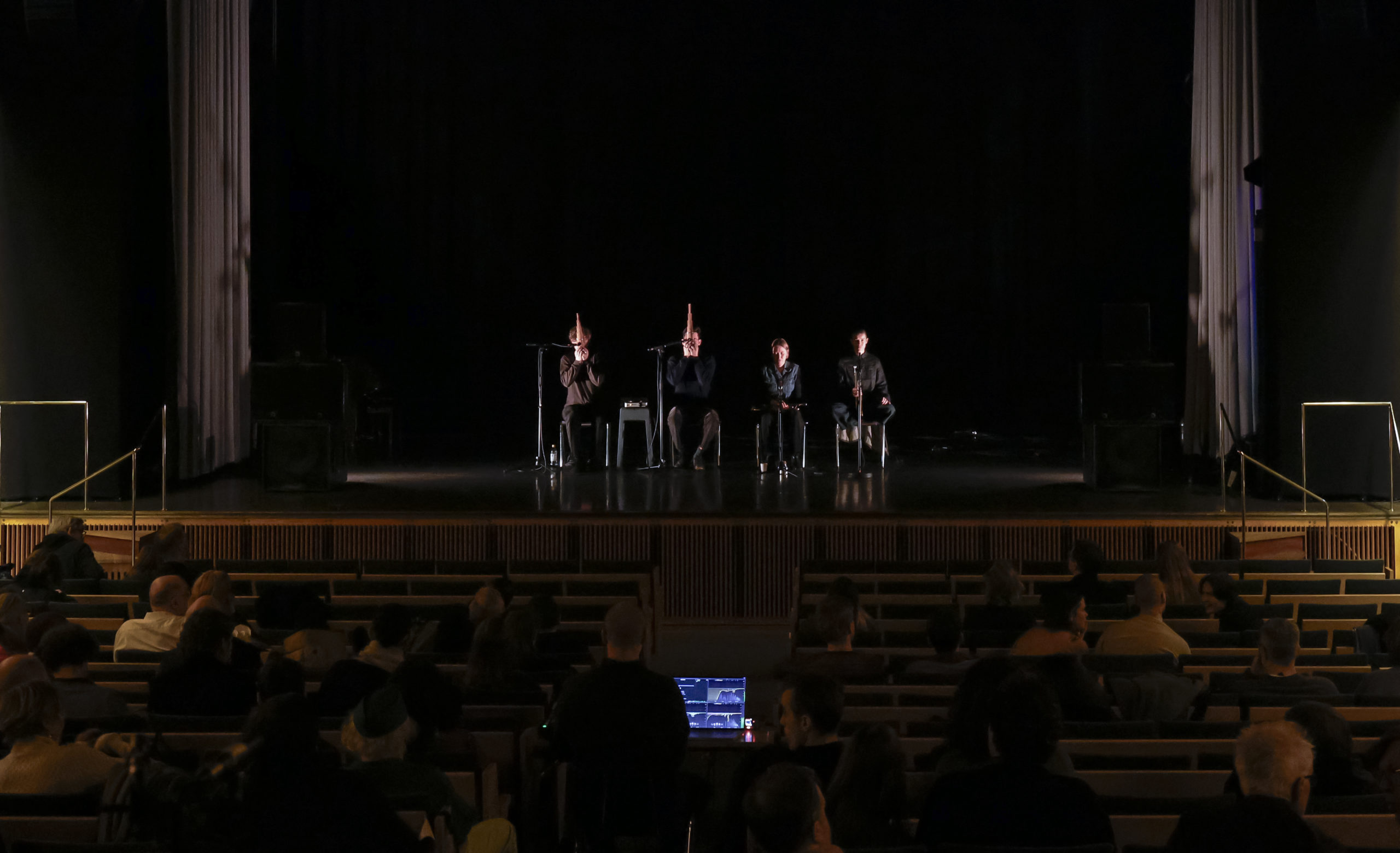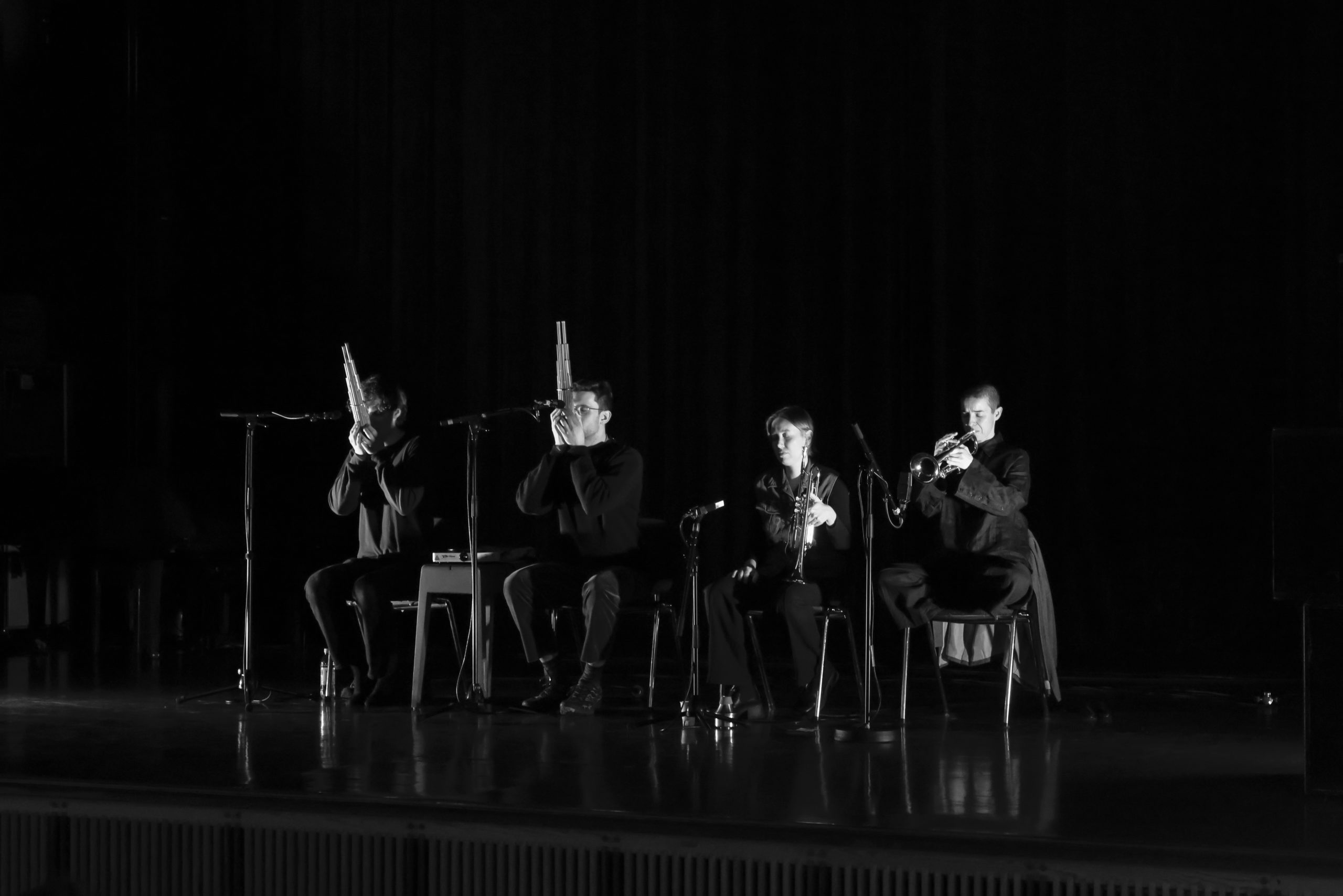26.1 2025, 14:00 – late
Zäta-salen, ABF Stockholm, Sveavägen 41, Stockholm
Blank Forms, Mint and Vassa Tassar present a commemorative day-long program honoring the life and practice of Catherine Christer Hennix (1948-2023). Marking nearly a year since Hennix’s passing, this memorial program offers an opportunity for friends and admirers to experience a large-scale realization of her final sound work, Kamigaku, and reflect on her life and work. For this memorial program, members of Hennix’s ensemble—Ellen Arkbro, Mattias Hållsten, Marcus Pal, Susana Santos Silva and Amedeo Maria Schwaller—will present Kamigaku in her absence.
Catherine Christer Hennix was born in 1948 in Stockholm, Sweden. Trained in jazz drumming from a young age, Hennix was also an early member of Stockholm’s Elektronmusikstudion, where she composed computer and electronic music. She studied linguistics and philosophy at Stockholm University before deciding to focus on mathematics, a discipline in which she would continue to work for many decades.
As a sound artist, musician, and composer, Hennix was part of the minimalist New York downtown school of harmonic sound and has worked extensively with some of its key figures, including Henry Flynt and La Monte Young. Influenced by her studies with Pandit Pran Nath, a master of the Kirana tradition of classical Hindustani music, and the contemplative practices transmitted by him, Hennix has produced a large body of sound works, including sine-wave compositions, solo works for tambura and for keyboard, as well as ensemble works performed by her own groups, all of which emphasize an orientation to harmonicity as an expression of the divine.
At Stockholm’s Moderna Museet in 1976, Hennix both displayed her art—steel sculptures, sine waves, paintings, projections, and texts—in a solo exhibition titled Topos and Adjoints and performed her compositions as part of Brouwer’s Lattice, a ten-day festival of new music she organized with Swedish curator Ulf Linde. She returned to New York to teach in the mathematics and computer science department at SUNY New Paltz in 1978–79 and remained upstate for much of the next decade before relocating to Sweden and the Netherlands. During this time she continued to display her work in group shows across Europe and the United States. Hennix was given the Centenary Prize Fellow Award by the Clay Mathematics Institute for her collaboration with the Russian-American poet and mathematician Alexander Esenin-Volpin in 2000. Around 2003, she returned to composing computer music, and a few years later assumed the role of bandleader for the first time in decades, playing with Hilary Jeffery, James Fulkerson, and an early iteration of the Chora(s)san Time-Court Mirage. In 2018, the Stedelijk Museum, Amsterdam, opened Catherine Christer Hennix: Traversée du Fantasme, her first institutional solo exhibition, while Hong Kong’s Empty Gallery hosted Thresholds of Perception, a large survey of her work. Hennix’s releases with Blank Forms include an LP of her 1974 interpretation of Karlheinz Stockhausen’s Unbegrenzt (2020), the Deontic Miracle’s Selections from 100 Models of Hegikan Roku (2019), Selected Early Keyboard Works (2018), and the two-volume collection of her writings Poësy Matters and Other Matters (2018). During Hennix’s last years she resided in Istanbul, where she was pursuing studies in classical Arabic and Turkish maqam.
This program is co-presented by Blank Forms, Mint, and Vassa Tassar. It is supported by the Swedish Arts Council, The City of Stockholm and The Sundén Art Foundation, and realized through a collaboration with ABF Stockholm and Elektronmusikstudion (EMS).
For more reading on Catherine Christer Hennix:
Introduction to Poësy Matters and Other Matters – Lawrence Kumpf
Basically One to Infinity: An Interview with Catherine Christer Hennix – Marcus Boon


